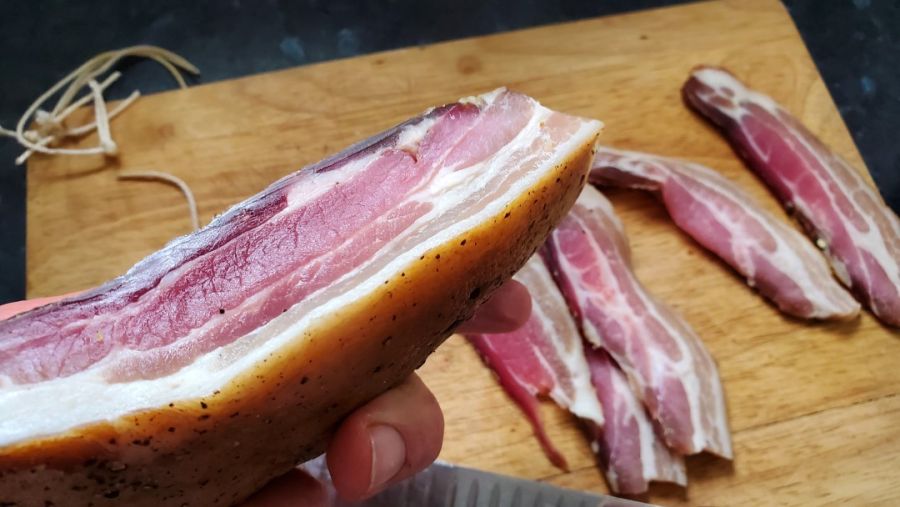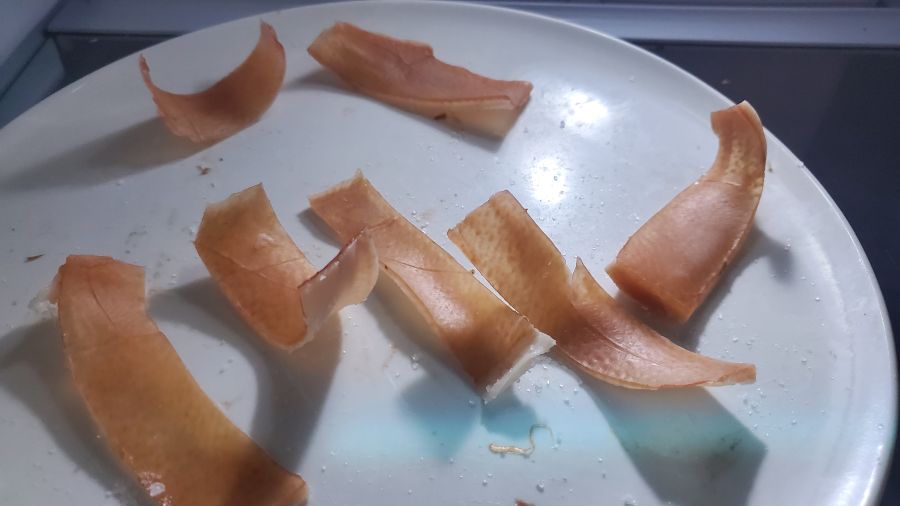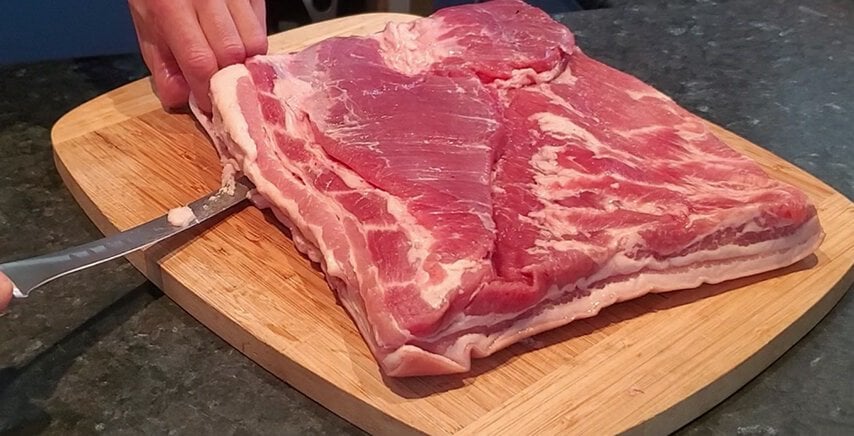I’ve made a lot of bacon. On this site, you can also find my homemade bacon mastery course, which covers every way of making bacon.
I’ve put a lot of thought into how you can use skin and researched different ways. I wanted to share what works best for me and some tips that could be helpful for you.
For dry-cured bacon, removing the skin will make it easier to slice when finished and dried. Dry-cured skin rind can also become crisp when cooked since moisture has been removed during the drying process.
Key Points:
- Dry Cured Cold Smoked pork belly with skin on will be hard dry skin, if it’s not flat – it will be hard to remove
- Hot Smoked/Cooked Bacon Pork Belly will be easier to remove because it is soft.
- Salt can assist in drying pork skin for rinds, creating a crispy, airy result.
- Pork Skin can be frozen for making rinds later
- Young Pig Skin is softer and harder to remove when fresh, compared to older 12-month-plus fresh pig skin.

Wet-cured bacon, which is hot smoked, means the skin should be removed before wet curing. Fresh skin can have salt sprinkled on to cure, then baked or air-fired for crisp, crackling rinds.
Cured/Smoked skin can be cut with scissors into squares, frozen, and used for stocks, stews, and broths for taste and nutrition.
Pork Skin and Homemade Bacon
People often don’t use this excellent resource, which can be obtained by researching and learning about bacon, and it is often discarded.
I’ll list ways I use pork skin to inspire you, hopefully.
Uses for Pork Skin from Bacon
- Stews
- Soups
- Casseroles
- Chicharrones / Cracking
Add a square piece of cured/smoked bacon skin to soups, stews, or other broth styles that can add a delicious base flavor.
If removed before salt curing, the skin can also be used for crackling. I like to sprinkle salt and leave it uncovered on a rack for 2-3 days before cooking.
How to Make Crispy Pork Rinds (Chicharrones, Crackling)
- Remove fat from the skin if desired
- Dry the Pork Skin in the fridge, uncovered. Sprinkle a little salt will help draw out moisture
- Air-fry or bake at 200C/392F
- If the skin was dried, pork skin will puff up in 4-6 minutes

Pork Skin Removed Before Curing
For pork belly, you can use a technique similar to removing the skin from fish and sliding a flexible filleting knife parallel to the chopping board.
Young pig skin is a lot softer than a 2-year-old sow pig pork belly.
Here are some examples of removing pork skin:

I have found that the skin can be left on if you are cooking or hot-smoking the bacon. It’s easier to remove but also wastes the skin and its precious collagen nutrients.
Fat and Pork Rinds
While researching additional resources for this article, I discovered that pork skin and rinds may actually contain a lot of mono-saturated fats.
The saturated fat in the rinds will depend on how much fat you scrap or separate from the skin.
I read about this for more information but decided it didn’t cover the topic enough.
https://www.instructables.com/Makin-Bacon-Skin-on-Vs-Skin-Off
If you want a detailed guide I wrote about making bacon; please find that here.
If you are new to cured meats and want a general idea of what it’s all about, here is an article I wrote to provide some background.

Tom Mueller
For decades, immersed in studying, working, learning, and teaching the craft of meat curing, sharing the passion and showcasing the world of charcuterie and smoked meat. Read More
